myHIN Blog
Category: Health Issues Articles

January 22, 2015
Breaking the Silence
With the new sense of hypervigilance, particularly in relation to domestic violence, I hope that we as a community can come together in active support of survivors of abuse. It must be clear that violence towards others in any form should not to be accepted, regardless of profession. I hope to see advancements with the NO MORE PSA campaigns, Purple Purse, and the NFL, realizing their goals of decreased rates of domestic violence and increased support of the victims.
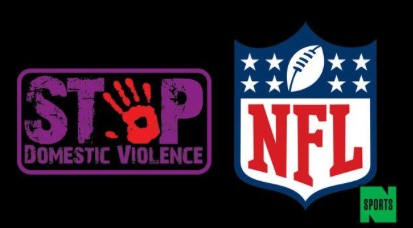
In recent months there has been significant media coverage concerning the lives, specifically the legal matters, of professional athletes. The abuse perpetrated by Ray Rice was seen by many outside of the sports world, and was the first of many noteworthy incidents involving his colleagues of the National Football League. Since Rice’s arrest, Greg Hardy, Ray McDonald, and Adrian Peterson have been in the news for their respective criminal acts. Athletes breaking the law is nothing new. In the past, fans have often been aware of the personal lives of athletes, even with minimal media coverage, but there seems to be a shift regarding the awareness. It is no longer solely fans who hear about the incidents, the coverage by major news outlets has increased the audience.
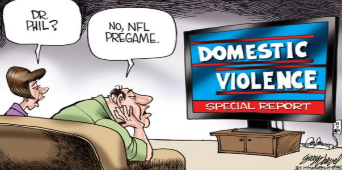
USA Today compiled a database of all NFL player arrests since 2000, citing 85 of the 713 arrests were made regarding situations of domestic violence. Being that domestic violence is the one of the most underreported crimes, it is reasonable to assume that these numbers are not completely representative of the truth. The difficulty to speak about domestic violence is highlighted in the “Speechless” series of NO MORE PSA. The commercials have aired in recent weeks showing celebrities, as well as current and former NFL players sitting in silence as they attempt to speak on domestic violence. Allstate Foundation Purple Purse is another group bringing domestic violence, and financial abuse in particular, to the forefront. Allstate Foundation reports that financial abuse occurs in 98% of domestic violence cases. This staggering number has prompted Purple Purse to make it “fashionable” to speak about domestic violence through fundraising to support survivors.
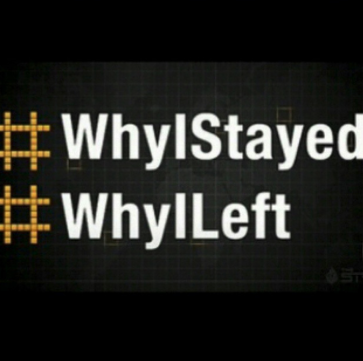 As we have seen, the issues faced by athletes are mirroring the societal issues we are facing today. The question of corporal punishment, the prevalence of substance abuse, the charges of domestic violence, and even the statements of solidarity displayed following the killings in Ferguson and Staten Island, in relation to the athletes of the NFL, have all led to further questions addressing all people, instead of athletes exclusively. We must continue to recognize that as contributing members of society we have a responsibility to treat ourselves, and each other, with respect and dignity at all times.
As we have seen, the issues faced by athletes are mirroring the societal issues we are facing today. The question of corporal punishment, the prevalence of substance abuse, the charges of domestic violence, and even the statements of solidarity displayed following the killings in Ferguson and Staten Island, in relation to the athletes of the NFL, have all led to further questions addressing all people, instead of athletes exclusively. We must continue to recognize that as contributing members of society we have a responsibility to treat ourselves, and each other, with respect and dignity at all times.
Continue to follow @myhealthimpact on the latest news regarding domestic violence and your health!
Share

November 13, 2014
Giving Gladly But Cautiously Doing So
The Set-up:
A few weeks ago I opened my corporate inbox and saw an email asking to donate blood. I wasn’t really up to do it but I read the entire email anyway. Although the actual event was put on by the American Red Cross, the idea of walking onto a decorated bus dubbed the “Bloodmobile” and giving blood didn’t quite jive with me. After getting over my initial fear, I signed up and received my confirmation email.
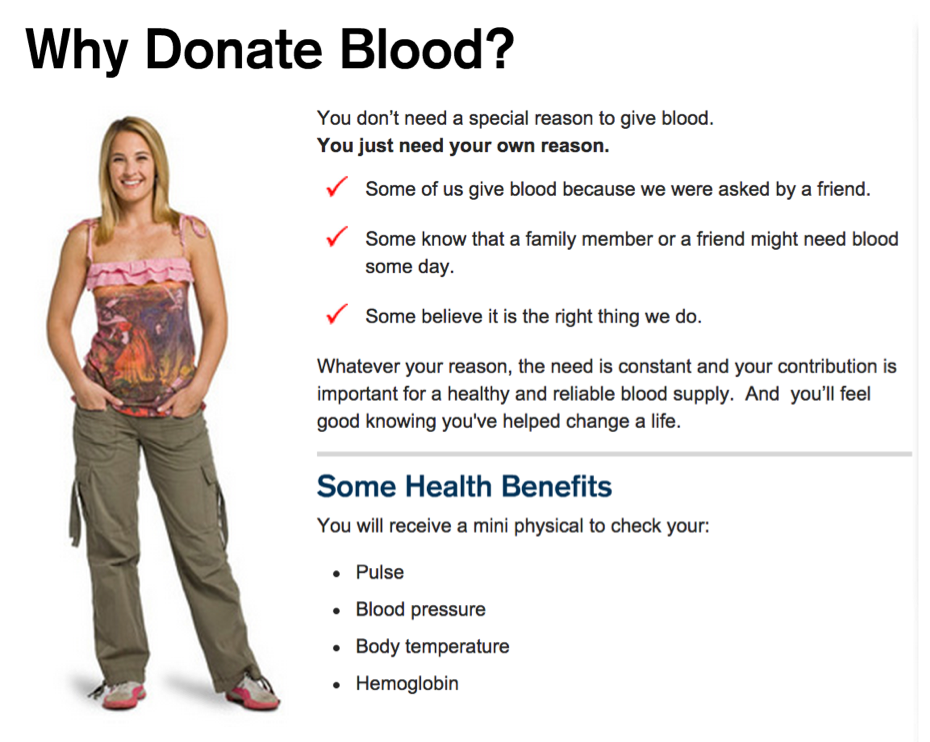
The Build-Up:
Like any other email, it slipped my mind and I went through the days as my usual self. Not once did I think about the “Bloodmobile” coming onsite. Then, a few days before the actual event I received an email with the subject line “Blood Drive Reminder (Next Week)”. I didn’t even open the email before I could feel my heart pulsate slightly faster.
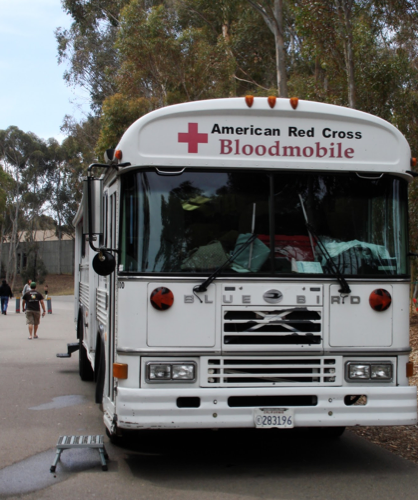
The Event:
The day had arrived when the Bloodmobile and I would meet face-to-face. I was a bit cautious because I couldn’t picture the actual environment. Once on the Bloodmobile I was greeted by a lovely lady who briefed me on the pre and post process. It didn’t seem too bad beside the fact that giving blood would take nearly 45 MINUTES! After answering a nearly 100 question survey about my entire life, I started to second guess whether or not I really wanted to give blood.
- What if something is wrong with me?
- What if the physician can’t find a good vein?
- What if the needle is infected?
Every scenario ran through my mind as I was trying to remain calm among my coworkers (who were also giving blood). When it was my turn, I sat in the left recliner (your choice based on the hand giving blood), formed a fist to activate my veins and closed my eyes. Forty-five minutes later and I had successfully donated blood. I was so relieved that it was all over. I grabbed a snack on the way out and made my way back to work.
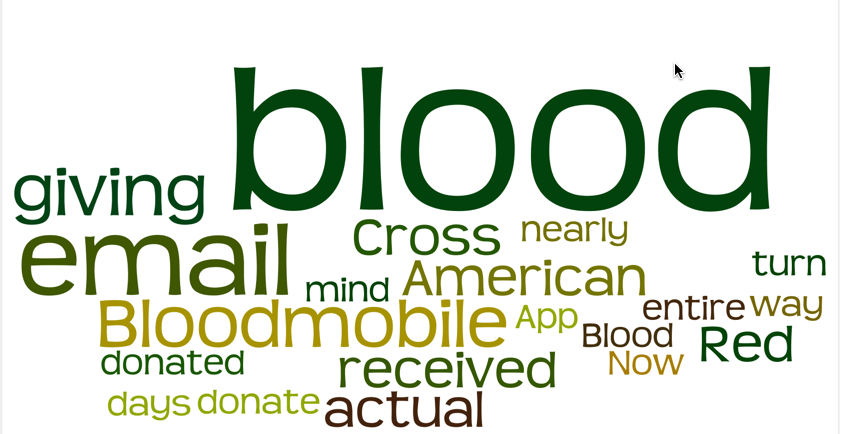
The Analysis:
Now that it’s all set and done, I am so happy I followed my gut and donated blood to the American Red Cross. I will admit that it was scary at first but the onboard physicians made it a pleasant experience. I even received my blood type following the blood drive so now I can prevent the risk of receiving an incompatible blood type surgery.
Now it’s your turn to donate blood! Download the American Red Cross Blood App (App Store / Google Play) and continue to follow @myhealthimpact for more personal health stories!
Share

October 07, 2014
Ignorance to Domestic Violence
Growing up I never actually seen a woman beaten in front of me or even wondered if domestic violence was even a growing issue. If anything, my life has never been directly affected by it and that plays a role on my views on this issue. In no way shape or form am I saying it’s not a problem, but I didn't know it was as big as a problem as it really is. The only instance that I heard of, was in high school when a guy threw his girlfriend on a table. At the time I thought to myself, “who throws people on tables” not “Oh my gosh he is physically abusing his partner”. Looking back, I was foolish not to take the situation more seriously. We all knew something was wrong with that dude before the occurrence happened, but the person (female) didn’t give off signs of abuse.
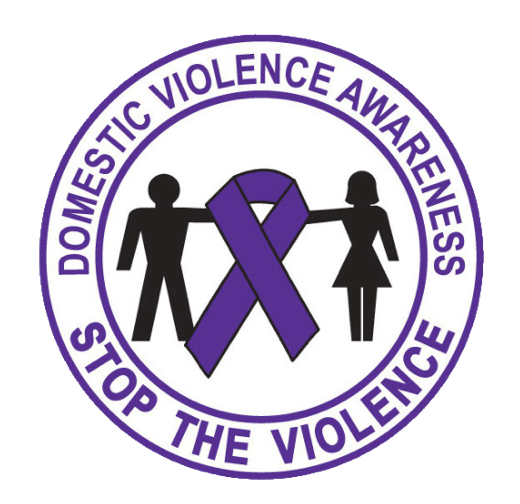
With the sudden headlines of athletes admitting and accusations of domestic violence, male and female, we, as honest folk ,really have to start asking ourselves “How often does this happen?” Maybe I’ve been oblivious to this because I am a male. Maybe its because I just didn’t get out much in my teenage years. One of my friends even called it taboo. It never came up in conversation, and I don’t think people would publicly bring it up. I’ve heard gossip, but none of it was ever confirmed.
To segway back to the athletes, specifically NFL athletes, I do not agree with the current domestic violence punishments issued to players. We live in a world where an athlete smoking weed or even dog fighting holds harsher punishments than domestic violence. Player punishment should not be the main source to shed light on this issue. What happens when the abuser isn’t famous, rich, or even well known? Honestly, I feel like some people just wouldn’t care as much.
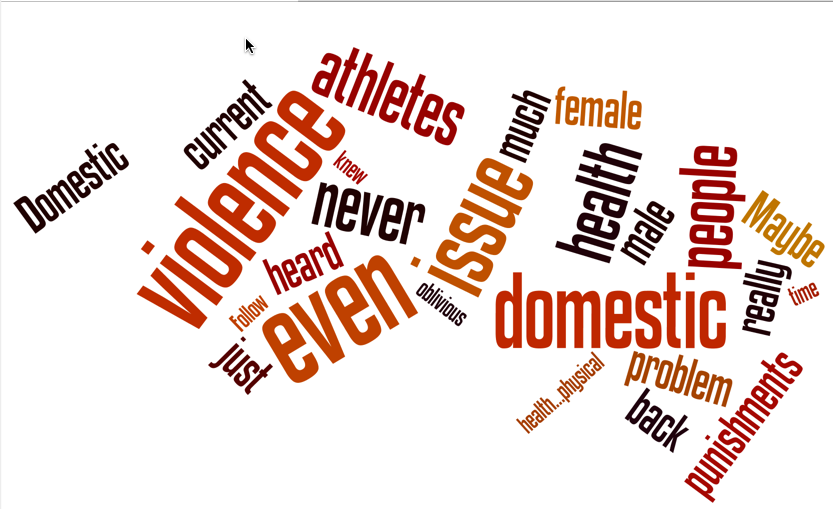
Domestic violence is also a health issue. There is the mental health...physical health...sexual health. Follow @myhealthimpact on Twitter and Tumblr as we discuss current social and cultural issues impacting health.
Share

August 13, 2014
“Selfies” and Mental Health Disorders
Experts including Dr. Lucie Hemmen and Dr. David Veal are beginning to consider a compulsion to take selfies as a serious mental health problem. Individuals can spend hours, even days taking hundreds of selfies in an attempt to capture the “perfect” photo (McKay). Taking selfies can lead to technology addiction and Body Dysmorphic Disorder — a chronic mental health condition in which the sufferer obsesses over perceived flaws with their body. In addition to that, it has been proven by multiple studies that taking selfies can be detrimental to a person’smental health, and it can be linked to narcissism, depression, and low self-esteem.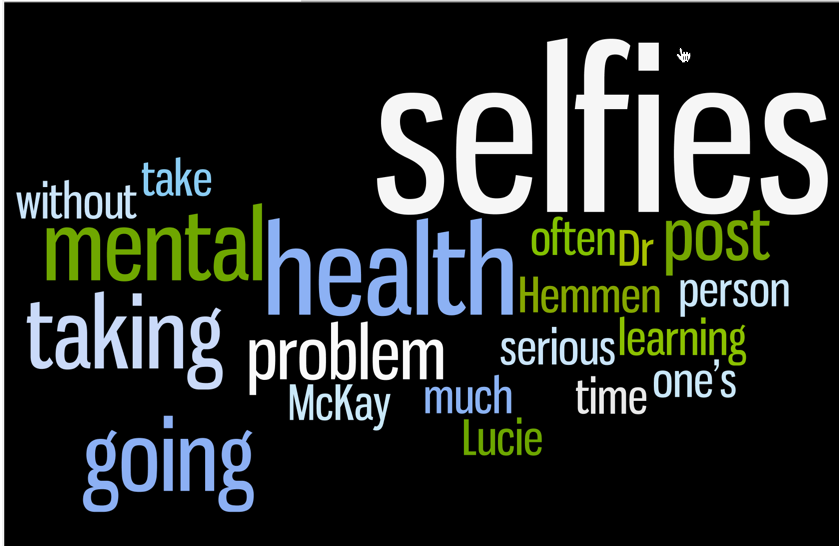
So how can we fix this problem? First, we have to realize that there is a deep denial about how dangerous it is to interact with screens without setting limits on how much time is spent doing so. With that said, it is hard to convince people that the effects of taking selfies are serious. Nevertheless, the common treatment of taking selfies is gradually learning how to go for longer periods of time without satisfying the urge to take a photograph, along with therapy to address the root cause of the problem. Thus, learning how to use selfies in moderation. Selfies, if used properly, can be a feel-good and often creative way, to chronicle one’s life and emotions and express one’s personality.
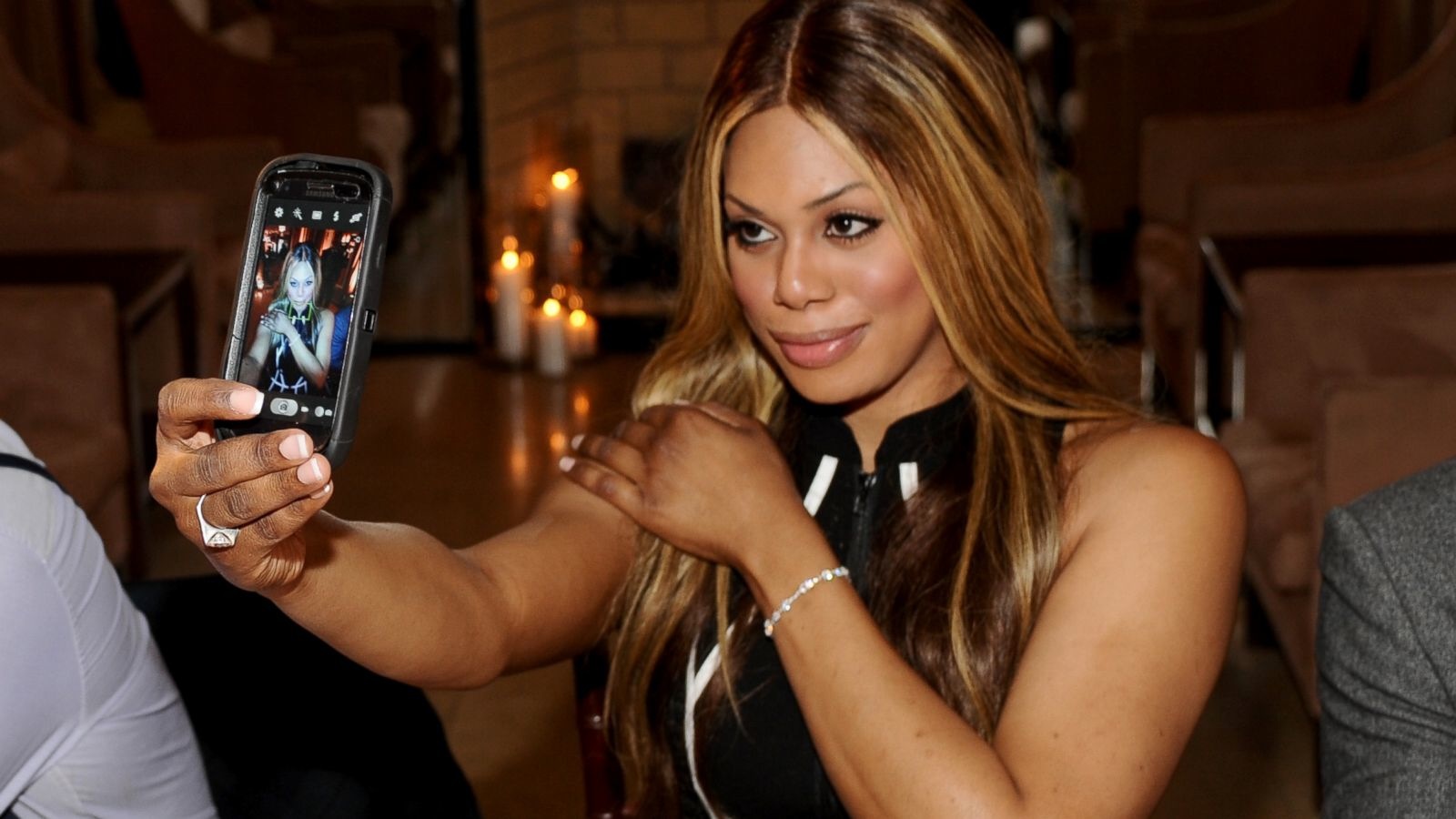
In conclusion, know this—According to clinical psychologist Lucie Hemmen there is a continuum of health and authenticity in what you shoot and post (McKay). A secure, mature person is going to post selfies that are spontaneous and not overly engineered or edited, and they're going to do it less often. A more insecure person is going to post staged or sexualized photos, and they're going to do it so much that they become consumed by it and the comments they receive. Let’s not let selfies control our mental health.
McKay, Tom. "A Psychiatric Study Reveals Selfies Are Far More Dangerous than You Think." PolicyMic. N.p., 28 Mar. 2014. Web. 16 June 2014. <http://www.policymic.com/articles/86287/a-psychiatric-study-reveals-selfies-are-far-more-dangerous-than-you-think>.
Share

July 30, 2014
Women’s Role in Men Health
Not to generalize all men but I know that the guys around my house used to absolutely despise going to the doctor because they felt like it was a waste of time. They believed that ALL could be healed with anything in the medicine cabinet and band-aids. This was my Dad before he suffered from a heart attack. These days I feel like our family dynamic is a little different. My Dad definitely doesn’t mind going to the doctor now and instead suggests healthy options at the dinner table.
 My Mother and I are the only two females in my household and although my Dad has taken a different role in the health of our family, at the end of the day, the women keep things realistic and rational. There are many food options that my Dad brings to the table, but we (the women) figure out how to make these things work for our family or how to politely tell him “No, we’ll pass on that one”. From incorporating more fish, chicken and turkey into our diets and working out pork and beef to even starting our own family garden, our family has been made a complete lifestyle change. What’s an idea without someone to put it into action? Right, just an idea.
My Mother and I are the only two females in my household and although my Dad has taken a different role in the health of our family, at the end of the day, the women keep things realistic and rational. There are many food options that my Dad brings to the table, but we (the women) figure out how to make these things work for our family or how to politely tell him “No, we’ll pass on that one”. From incorporating more fish, chicken and turkey into our diets and working out pork and beef to even starting our own family garden, our family has been made a complete lifestyle change. What’s an idea without someone to put it into action? Right, just an idea.
I believe that women play a huge role in men’s health. Typically because women are more aware of the signs of pending health issues thus sending up a red flag and ensuring that the men (in our families) see a doctor. So let's just face it, we are the backbone!

Share

May 21, 2014
Where are the black doctors?
 Recent studies have revealed that 5 percent of physicians and dentists in the United States are black. With a statistic like that, how does one find the courage and motivation to work towards a profession where they see no one like themselves? As I continue my journey in applying to medical school this summer, I find myself trying to beat this statistic and become the example. Hopefully a general surgeon that will one day be able to share her personal stories, and most importantly, my struggles, so that future black medical school candidates can see examples of successful black physicians who likely had similar backgrounds, experiences and struggles as they do. With that said, I think its important to start this process early. If you introduce the possibility and the representation of black physicians at a young age, I believe that more black students would embrace the idea of becoming a physician. In addition to that, black students would view Medical and Dental School as an option and not a dream. It’s time to change the statistic and move above it. We can no longer let the challenges and academic curriculum for preparing and applying to health professional schools hinder our ability as black students to perform and show that we too belong in these professions. Though sometimes things may get difficult, there will always be resources available to help guide and encourage us. The need for more black doctors should be taken more seriously. The shortage in black physicians can potentially make access to healthcare even more challenging for minorities. Thus, affecting minorities’ access to healthcare and proper treatment. So, the question no longer needs to be, “Where are the Black Doctors” but rather “Who are all these black doctors”. Though this is not something that can be changed over night, it can be changed in the future. As long as the seeds are planted, the tree will grow. Black physicians need to work together to help inspire future black doctors.
Recent studies have revealed that 5 percent of physicians and dentists in the United States are black. With a statistic like that, how does one find the courage and motivation to work towards a profession where they see no one like themselves? As I continue my journey in applying to medical school this summer, I find myself trying to beat this statistic and become the example. Hopefully a general surgeon that will one day be able to share her personal stories, and most importantly, my struggles, so that future black medical school candidates can see examples of successful black physicians who likely had similar backgrounds, experiences and struggles as they do. With that said, I think its important to start this process early. If you introduce the possibility and the representation of black physicians at a young age, I believe that more black students would embrace the idea of becoming a physician. In addition to that, black students would view Medical and Dental School as an option and not a dream. It’s time to change the statistic and move above it. We can no longer let the challenges and academic curriculum for preparing and applying to health professional schools hinder our ability as black students to perform and show that we too belong in these professions. Though sometimes things may get difficult, there will always be resources available to help guide and encourage us. The need for more black doctors should be taken more seriously. The shortage in black physicians can potentially make access to healthcare even more challenging for minorities. Thus, affecting minorities’ access to healthcare and proper treatment. So, the question no longer needs to be, “Where are the Black Doctors” but rather “Who are all these black doctors”. Though this is not something that can be changed over night, it can be changed in the future. As long as the seeds are planted, the tree will grow. Black physicians need to work together to help inspire future black doctors.
Share

May 07, 2014
Why I Became Involved
Time really does fly by. When time picked up its wings my freshmen year, I didn’t realize how quickly it would land into my senior year. As I evaluate my time at NC State, I realize that I’ve had a great undergraduate career. This wouldn’t have happened unless I made the decision early to get involved.
Entering into any unfamiliar territory can be quite challenging. Everything is new and you don’t know what to expect. This is exactly how I felt coming into NC State my freshmen year. To counter my feelings, I decided to turn my fear into opportunity. An opportunity to take a chance at life. A few pitfalls are to be expected but getting back up is all that matters. Freshmen year was my chance to learn about this new environment where I would be spending the next four years of my life. I recall attending the African American Symposium in the summer and hearing student leaders share about their collegiate experience. The symposium really helped me learn about various African American organizations on campus. It was here that I was assigned a mentor with the Peer Mentor Program. You can say that I had a “big brother” who helped make my transition from high school to college rather “smooth”. He gave the spill about campus activities and groups, which made me feel “cool” at the time. We began to foster a positive relationship that helped me jumpstart my college career. Soon after school started, I found myself visiting the African American Cultural Center on a regular basis. Here is where I found support and engagement.
Throughout my time at NC State, I’ve been involved in various campus organizations. During my sophomore year, I decided to become a Peer Mentor. I felt that it was only right to serve as a guide to an incoming freshman. I saw the impact that the Peer Mentor Program had on me and I wanted another freshman to have that same positive experience. My first year was pivotal in setting the foundation for my GPA. Because I excelled academically, I got accepted into the National Society of Collegiate Scholars and the Gamma Beta Phi Honors Society. I not only wanted to be members in these organizations but I wanted to be a leader. I became the newly appointed Social Chair for Gamma Beta Phi in the spring of my sophomore year. I wanted to get my feet wet so I didn’t run for a high position quite yet. Alongside these organizations, I got accepted to serve as a University Ambassador. This opportunity would allow me to give tours each week to prospective students and work in the Murphy Football Center off campus. Serving in this capacity allowed me to practice my public speaking on a consistent basis.
My leadership roles really picked up during my junior year. I got initiated into the Eta Omicron Chapter of Alpha Phi Alpha Fraternity, Incorporated in the fall of my junior year. In the spring, I became the Vice President of the African American Cultural Center Student Ambassadors Program. To add another organization to the list, I became the Executive Vice President of the Poole Council. All of these leadership roles taught me how to work with people. From different attitudes and personalities, I had to remain focused on accomplishing the task at hand. I wanted to gain exposure working with people within my race and outside of my race.
Junior year also afforded me the opportunity to work on the @myHealthImpact team. Because people recognized me as a leader on campus, I believe they listened to what I had to say. With the project, I used that leadership and incorporated that into social media. By using social media, I have been able to spread awareness to various health disparities that plague my generation. All of a sudden, it hit me. There is power behind your voice. You never know who is being impacted by your actions or even by the words you speak. The quote is true, “somebody is always watching”.
As I journey into divinity school after graduation, I believe that all of my leadership experiences will pay off. These leadership roles have taught me how to communicate with others and how to lead by example. It is unrealistic to expect those who are following you to do what you won’t do yourself. Also, you can’t be a leader if you have no followers. A leader doesn’t have to speak on all their accomplishments. Instead, their work speaks for itself. I was determined to get involved so that I could be a role model for someone to follow. For that individual who made not have had a male influence growing up. For someone who wanted to be a leader but they thought it wasn’t the “cool thing to do”. I’ve hit some bumps in the road but I’ve kept moving forward. I’ve almost completed my race and now I’m passing the baton to those whose race has just begun.

Share

January 23, 2014
10 Ways to Impact Your Health from @myHealthImpact
1) Find a medical doctor who cares and you feel comfortable with sharing your medical history.
2) See your doctor once a year.
3) Get the appropriate medical tests and screenings done (e.g., HIV, blood pressure, bone density).
4) Document your medical history.
5) Know your family medical history; talk to family members about your and their health.
6) Consider using technology to track your health goals (calorie intake, exercise times, types of exercises, weight loss, calories burned, etc.).
7) Get a good night’s sleep.
8) Estimate portion sizes for what you eat.
9) Check condoms for expiration date which is provided on the packaging.
10) Keep a positive spirit.

Share

October 21, 2013
Health Literacy?
Health Literacy is defined as the degree to which individuals have the capacity to obtain, process, and understand basic health information and services needed to make appropriate health decisions. It requires a complex group of reading, listening, analytical, and decision-making skills, and the ability to apply these skills to health situations. For example, it includes the ability to understand instructions on prescription drug bottles, appointment slips, medical education brochures, doctor's directions and consent forms, and the ability to negotiate complex health care systems. When patients are faced with complex information and treatment decisions, there are specific tasks that should be carried out to ensure that one is getting the best treatment possible. Those tasks include:
• Evaluating information for credibility and quality
• Analyzing relative risks and benefits
• Calculating dosages
• Interpreting test results
• Locating health information.
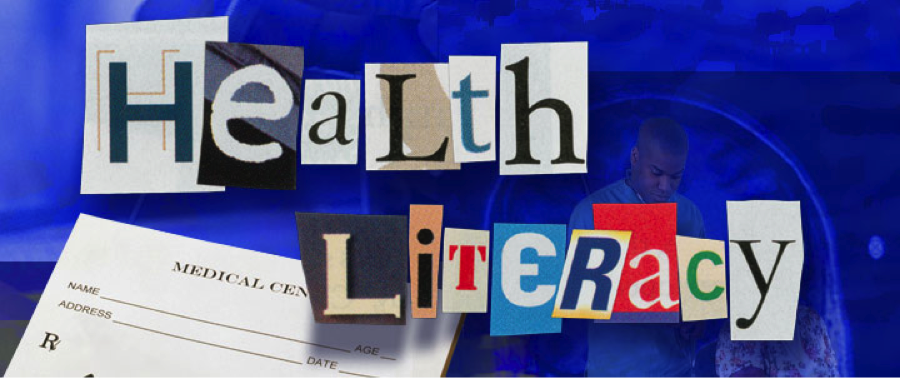
In order to accomplish these tasks, individuals may need to be:
• Visually literate
• Computer literate
• Information literate
• Numerically or computationally literate
• Oral language skills are important as well.
In addition to that, it is important for patients to articulate their health concerns and describe their symptoms accurately. They need to ask pertinent questions, and they need to understand spoken medical advice or treatment directions. In an age of shared responsibility between physician and patient for health care, patients need strong decision-making skills.
Next time you visit your local physician, make sure you are practicing and carrying out these tasks. It is important for patients to receive the best care possible, as well as, know how to make accurate decisions when it comes to healthcare.
Follow us on Tumblr tumblr.myhealthimpactnetwork.org
Follow us on Twitter @myhealthimpact
Share

October 21, 2013
Breast Cancer: Study Results, Causes, and Health Literacy
When thinking about breast cancer, many people automatically shift their focus to women. In particular, women within the African American community. Studies have shown that breast cancer is more common in white women than African American women. In all actuality, men are also susceptible to breast cancer. Just like women, men do have breast tissue, which has the possibility of developing breast cancer.
I was pretty surprised when I learned of this news. From my research, the exact cause of breast cancer is not known. Even though there is no exact cause, the risk of getting breast cancer increases with age. Factors such as family history and alcohol usage also increase the possibility of getting breast cancer. For males, the most cases for breast cancer have been detected between ages 60- 70. Overall, a male’s risk of obtaining breast cancer is only 1%. Though this percentage is fairly low, this doesn’t completely eliminate the possibility for men.
In terms of health literacy, everyone needs to be knowledgeable about breast cancer. Having this knowledge base can help improve the quality of life by recognizing the signs early and seeking treatment if necessary. Knowing that breast cancer is 100 times more likely in women than men, this encourages me to consistently check on the women in my life. It is my duty to ensure that they are going to get mammograms and maintaining a healthy lifestyle. Just knowing about breast cancer isn’t enough. Being proactive in your efforts can help save lives.
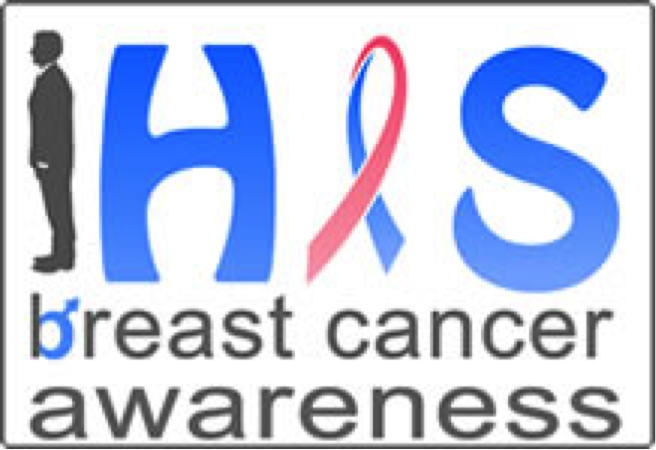
Follow us on Tumblr tumblr.myhealthimpactnetwork.org
Follow us on Twitter @myhealthimpact
Share
In Partnership with: Poole College of Management, College of Humanities and Social Sciences, National Science Foundation, Penn State
Take Action, Get Tested: Find Your Local Testing Center Why Get Tested?
